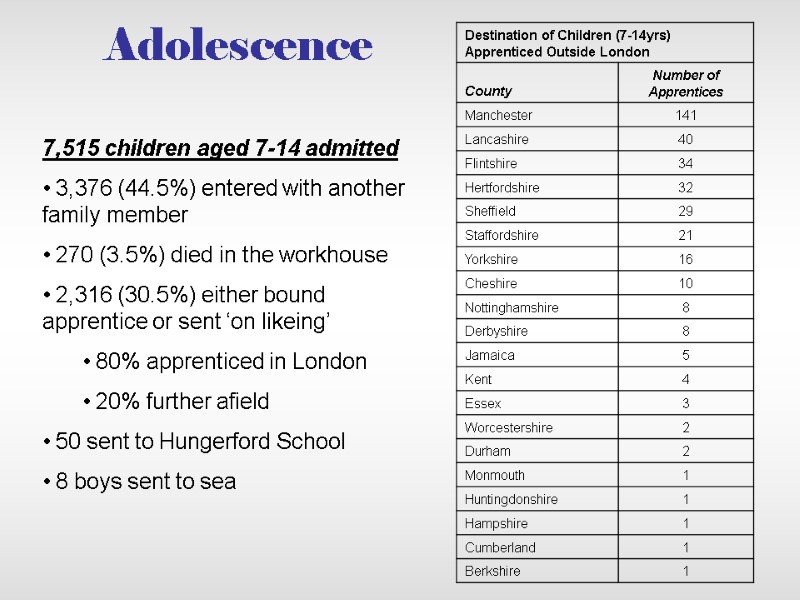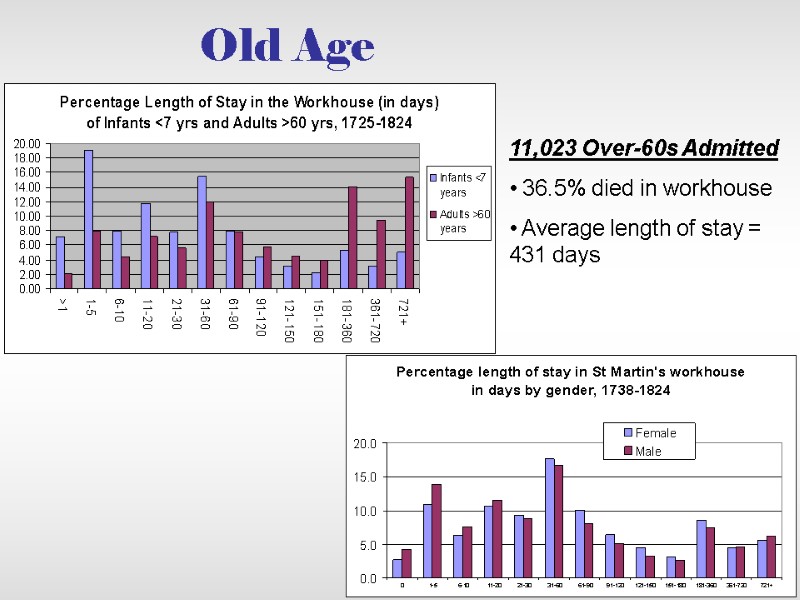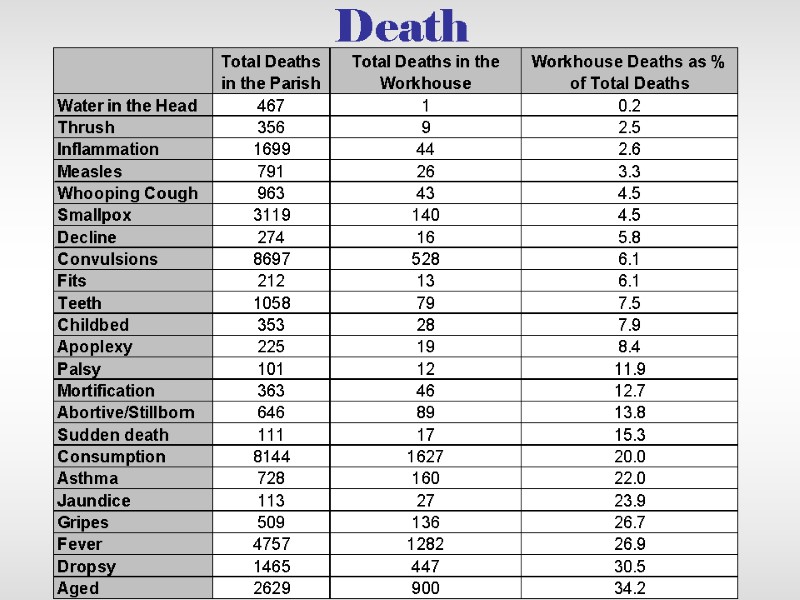 The London Workhouse: A ‘Total Institution’ for the C18th? Peter Jones http://research.ncl.ac.uk/pauperlives/
The London Workhouse: A ‘Total Institution’ for the C18th? Peter Jones http://research.ncl.ac.uk/pauperlives/
 Defining the ‘Total Institution’ P. O’Brien, The Promise of Punishment: Prisons in C19th France (1982) Sean McConville, A History of English Prison Administration (1981) Andrew Scull, Museums of Madness: the Social History of Insanity in C19th England (1981) M. A. Crowther, The Workhouse System 1834-1929 (1981), ‘…any attempt to reconstruct workhouse life must be a patchwork, selected from the letters and reminiscences of the literate poor, or gleaned from middle class accounts’ – Crowther, p.193 ‘[The image of the workhouse] has been created by outsiders, who usually condemned it either for harshness or laxity’ – ibid.
Defining the ‘Total Institution’ P. O’Brien, The Promise of Punishment: Prisons in C19th France (1982) Sean McConville, A History of English Prison Administration (1981) Andrew Scull, Museums of Madness: the Social History of Insanity in C19th England (1981) M. A. Crowther, The Workhouse System 1834-1929 (1981), ‘…any attempt to reconstruct workhouse life must be a patchwork, selected from the letters and reminiscences of the literate poor, or gleaned from middle class accounts’ – Crowther, p.193 ‘[The image of the workhouse] has been created by outsiders, who usually condemned it either for harshness or laxity’ – ibid.
 The C18th London Workhouse c1800: 50 workhouses in the London metropolitan area Diverse institutions: between 10 and 1,000 inmates Diversity of experience: between 89% and 19% of parish poor relieved indoors In total, almost 12,000 of London’s inhabitants resident in workhouses in 1801
The C18th London Workhouse c1800: 50 workhouses in the London metropolitan area Diverse institutions: between 10 and 1,000 inmates Diversity of experience: between 89% and 19% of parish poor relieved indoors In total, almost 12,000 of London’s inhabitants resident in workhouses in 1801
 The Project The Workhouse in 1871 http://research.ncl.ac.uk/pauperlives/ Jeremy Boulton, Leonard Schwarz, John Black
The Project The Workhouse in 1871 http://research.ncl.ac.uk/pauperlives/ Jeremy Boulton, Leonard Schwarz, John Black
 Admission and Residency
Admission and Residency
 Pregnancy and Birth 1725-1824 1,376 women heavily pregnant or in labour at admission Over 4,000 children born and baptised
Pregnancy and Birth 1725-1824 1,376 women heavily pregnant or in labour at admission Over 4,000 children born and baptised
 Early Childhood 11,155 children <7 admitted 73% admitted with family member 2,230 died in the workhouse 20% within 14 days 91% within a year 1,188 were sent to nurse 206 bound apprentice
Early Childhood 11,155 children <7 admitted 73% admitted with family member 2,230 died in the workhouse 20% within 14 days 91% within a year 1,188 were sent to nurse 206 bound apprentice
 Adolescence 7,515 children aged 7-14 admitted 3,376 (44.5%) entered with another family member 270 (3.5%) died in the workhouse 2,316 (30.5%) either bound apprentice or sent ‘on likeing’ 80% apprenticed in London 20% further afield 50 sent to Hungerford School 8 boys sent to sea
Adolescence 7,515 children aged 7-14 admitted 3,376 (44.5%) entered with another family member 270 (3.5%) died in the workhouse 2,316 (30.5%) either bound apprentice or sent ‘on likeing’ 80% apprenticed in London 20% further afield 50 sent to Hungerford School 8 boys sent to sea
 Early Adulthood Women admitted to the workhouse aged 20-40 Constitute 80% of all admissions in this age range 70.5% of all women admitted aged 20-40 years are ‘single independents’ Average length of stay = 111 days (216 for all admissions)
Early Adulthood Women admitted to the workhouse aged 20-40 Constitute 80% of all admissions in this age range 70.5% of all women admitted aged 20-40 years are ‘single independents’ Average length of stay = 111 days (216 for all admissions)
 Old Age 11,023 Over-60s Admitted 36.5% died in workhouse Average length of stay = 431 days
Old Age 11,023 Over-60s Admitted 36.5% died in workhouse Average length of stay = 431 days
 Sickness
Sickness
 Death
Death
 To Conclude… ‘…any attempt to reconstruct workhouse life must be a patchwork, selected from the letters and reminiscences of the literate poor, or gleaned from middle-class accounts…’ - Crowther, p.193 Ann Ashton, admitted November 1765, ‘her husband paying 2s. 6d. for her keep’ Jane Graham, admitted October 1800, ‘on condition that he husband pays 5s. per week’ Charlotte Sowley, admitted June 1795, aged 9, ‘her father paying 3s. a week’
To Conclude… ‘…any attempt to reconstruct workhouse life must be a patchwork, selected from the letters and reminiscences of the literate poor, or gleaned from middle-class accounts…’ - Crowther, p.193 Ann Ashton, admitted November 1765, ‘her husband paying 2s. 6d. for her keep’ Jane Graham, admitted October 1800, ‘on condition that he husband pays 5s. per week’ Charlotte Sowley, admitted June 1795, aged 9, ‘her father paying 3s. a week’



























